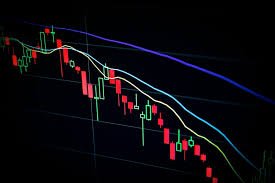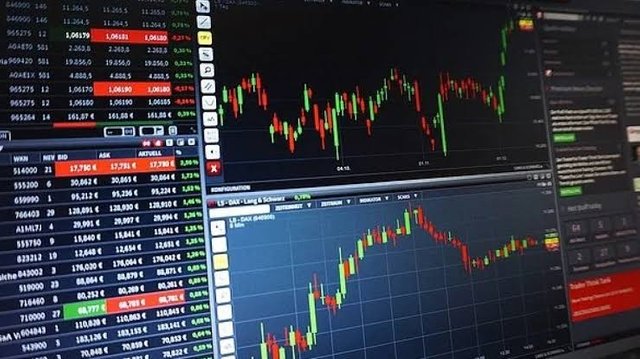.jpeg)
Today I will be engaging in the contest that has been brought forward by this community which has been titled understanding crypto trading. I urge you all to relax and stay put as I drop my entry regarding this contest today
What is trading?
Trading is the buying and selling of securities, such as stocks, bonds, commodities, or currencies, with the aim of making a profit. Traders buy assets when they believe their price will go up, and sell them when they believe the price will go down. The profit or loss that a trader realizes depends on the price difference between the purchase and sale of the asset.
Trading can be done in various forms, including online, through a brokerage or through an exchange. Online trading platforms offer individuals the opportunity to trade on their own, while brokerages provide advice and guidance to help traders make informed decisions. Exchanges, such as the New York Stock Exchange or the London Stock Exchange, are marketplaces where traders can buy and sell assets.
Trading requires a deep understanding of financial markets and the assets being traded. Traders must also be aware of economic and political events that can impact the price of an asset. In order to trade successfully, traders must have a solid understanding of technical analysis, which involves the use of charts and other tools to identify patterns and trends in the market, and fundamental analysis, which involves examining economic and financial data to understand the underlying health of a company or the economy.
Trading is a high-risk, high-reward activity, and it is not suitable for everyone. It is important for individuals to understand the risks and to have a solid understanding of the market before they start trading. Additionally, traders must have discipline and patience, as well as a well-defined trading plan that outlines their strategies and goals.
In conclusion, trading is the act of buying and selling assets in the hopes of making a profit. It requires a deep understanding of financial markets, a solid understanding of technical and fundamental analysis, discipline, and patience. While it can be a lucrative activity, it is important for individuals to understand the risks involved and to approach it with caution.
What is crypto currency trading ?
Cryptocurrency trading refers to the buying and selling of digital or virtual currencies, such as Bitcoin, Ethereum, and Litecoin, with the goal of making a profit. Just like traditional trading, the profit or loss in cryptocurrency trading depends on the price difference between the purchase and sale of the asset.
Cryptocurrencies are decentralized digital assets that use cryptography to secure and verify transactions. They operate independently of central banks and are typically traded on online platforms, called cryptocurrency exchanges.
Cryptocurrency trading can be volatile due to the decentralized and global nature of the market. Prices can fluctuate greatly in short periods of time and can be affected by a range of factors, including economic and political events, as well as regulatory changes.
Traders in the cryptocurrency market use technical analysis and market data to make informed decisions and navigate this highly speculative market. It's important to keep in mind that cryptocurrency trading carries a high level of risk, and individuals should thoroughly research and understand the market before investing.
In conclusion, cryptocurrency trading involves buying and selling virtual currencies with the goal of making a profit. It is a highly speculative and volatile market that requires a deep understanding of the market and its risks. Individuals should approach cryptocurrency trading with caution and be prepared for the potential for significant losses.
What are the trading principles to always keep in mind as a Crypto Trader and how can you build your own crypto trading strategy.
As a cryptocurrency trader, it's important to keep the following principles in mind:
Diversification: Diversifying your portfolio by investing in a range of cryptocurrencies can help reduce the risk of losses if one particular asset underperforms.
Risk Management: It's important to have a well-defined risk management strategy in place to minimize potential losses and protect your capital. This may include setting stop-loss orders or limiting the amount of capital invested in a single trade.
Emotion Management: Trading can be emotionally charged, but it's important to make decisions based on data and analysis rather than emotions.
Patience: The cryptocurrency market can be volatile, and price swings can be substantial. It's important to be patient and stick to your trading strategy, rather than making impulsive decisions based on short-term market movements.
Continuous Learning: The cryptocurrency market is constantly evolving, and it's important to stay up-to-date on market developments and new technologies.
To build your own crypto trading strategy, consider the following steps:
Define your goals: What do you want to achieve through trading, and what is your risk tolerance?
Research the market: Familiarize yourself with the different cryptocurrencies, their uses, and how they are performing in the market.
Analyze data: Use technical analysis, market data, and other tools to make informed trading decisions.
Develop a plan: Decide on the specific cryptocurrencies you want to trade, your trading frequency, and the strategies you will use to enter and exit trades.
Test and refine: Test your strategy in a demo trading environment and continuously refine it based on your results.
It's important to remember that cryptocurrency trading is a high-risk, high-reward activity, and there are no guarantees of success. Before trading, it's crucial to thoroughly research the market, understand the risks involved, and have a solid trading plan in place.
.jpeg)
Explain how you can use Fundamental analysis to generate your own Crypto Trading Ideas.
Fundamental analysis is the process of evaluating a cryptocurrency's intrinsic value by examining its underlying economic, financial, and technological factors. This analysis can be used to generate your own crypto trading ideas by helping you make informed decisions about whether to buy, hold, or sell a particular cryptocurrency.
Here are some steps to use fundamental analysis to generate your own crypto trading ideas:
Research the cryptocurrency: Understand the technology behind the cryptocurrency, its use cases, and the industry it operates in.
Evaluate the team: Consider the background, experience, and track record of the cryptocurrency's development team.
Analyze the financials: Look at the cryptocurrency's financial metrics, such as its revenue, profit, and growth rate.
Study adoption and usage: Consider the cryptocurrency's current adoption rate, its user base, and how it is being used.
Analyze the competition: Understand the cryptocurrency's competition, including other cryptocurrencies in the same industry, and how it stacks up against them.
Consider the market outlook: Consider the overall market outlook, including macroeconomic factors and regulatory developments, that may impact the price of the cryptocurrency.
Formulate a thesis: Based on your research and analysis, formulate a thesis on whether the cryptocurrency is undervalued or overvalued, and whether its price is likely to go up or down in the future.
Monitor developments: Continuously monitor developments in the cryptocurrency's technology, adoption, and market conditions to make informed trading decisions.
It's important to note that fundamental analysis is just one aspect of the information that should be considered when making trading decisions. It's also important to consider technical analysis and market sentiment when making trading decisions. Additionally, it's crucial to have a well-defined trading plan and risk management strategy in place to minimize potential losses.
Explain the 3 key concepts of Risk management every new Crypto Trader Should Know?
Risk management is a critical aspect of cryptocurrency trading, as the market can be highly volatile and prices can fluctuate greatly in short periods of time. Here are the three key concepts of risk management that every new crypto trader should know:
Diversification: Diversifying your portfolio by investing in a range of cryptocurrencies can help reduce the risk of losses if one particular asset underperforms.
Position sizing: Position sizing refers to the amount of capital invested in a single trade. It's important to limit the amount of capital invested in a single trade to minimize potential losses and protect your overall portfolio.
Stop-loss orders: A stop-loss order is a pre-defined order to sell a cryptocurrency if its price falls below a certain level. This can help minimize potential losses and protect your capital.
It's important to keep in mind that no risk management strategy can guarantee against losses. However, by incorporating these concepts into your trading strategy, you can minimize the impact of potential losses and increase the likelihood of long-term success. Additionally, it's important to continuously monitor market conditions, update your risk management strategy, and refine your overall trading plan as necessary.